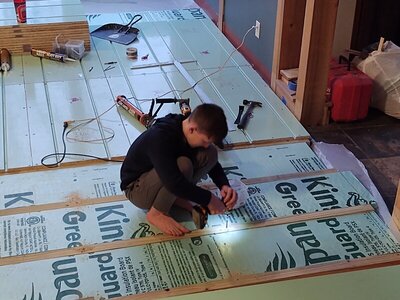747mopar
Well-Known Member
This thread really doesn't fit anywhere seeings how it's more for homes but I had some interest in it on a different thread so I'll post it here.
We built out home roughly 20 years ago, first we built the main 30'×40' with a full basement then later added a 24'×24' living room. The living room sits on a full foundation but is just a 4" thick uninsulated slab with a fireplace. At the time radiant floors and boilers weren't something you heard about and with an efficient wood burner insert our fireplace kept it super cozy.
Fast forward to now, we now heat the home and garage with a boiler so hot water is plentiful and radiant heat is becoming the norm. After running the boiler for 3 years I don't even want to touch the wood burner insert, with the boiler everything is outside and it can burn over 24 hours on a load.. no brainer.
The decision was made to go with Warmboard, it's definitely not the cheapest option but it's a company that has nothing but good reviews and a quality product that makes sense for my project.
Just received the installation kit which has the full panel and plumbing drawings, router templates, bits, guides and alignment pegs. Panels show up Wednesday

We built out home roughly 20 years ago, first we built the main 30'×40' with a full basement then later added a 24'×24' living room. The living room sits on a full foundation but is just a 4" thick uninsulated slab with a fireplace. At the time radiant floors and boilers weren't something you heard about and with an efficient wood burner insert our fireplace kept it super cozy.
Fast forward to now, we now heat the home and garage with a boiler so hot water is plentiful and radiant heat is becoming the norm. After running the boiler for 3 years I don't even want to touch the wood burner insert, with the boiler everything is outside and it can burn over 24 hours on a load.. no brainer.
The decision was made to go with Warmboard, it's definitely not the cheapest option but it's a company that has nothing but good reviews and a quality product that makes sense for my project.
Just received the installation kit which has the full panel and plumbing drawings, router templates, bits, guides and alignment pegs. Panels show up Wednesday



















